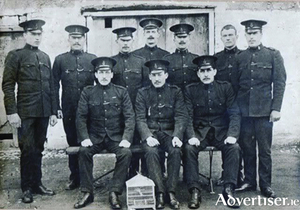Search Results for 'IRB'
6 results found.
Mayo through Jack Leonard’s lense
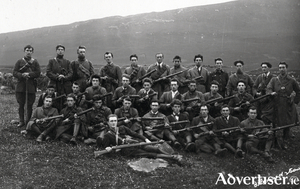
'The Men of the West', that iconic photograph of Michael Kilroy's flying column taken with only the aid of natural light on the southern slopes of Nephin at 11.45pm on the longest day of the year in 1921, is known to us all. It hangs in numerous Mayo pubs and homes and thanks to the quality of the conditions and the skill of the photographer, we can clearly see the resolute expressions of the young men, we know their names and know their stories. But what of the photographer himself? What of the man who captured this first ever photo of an IRA unit on active service in Ireland? Jack Leonard did not just happen upon Kilroy and his men that bright June night. He was no amateur photographer, and neither was he a bystander during his country's fight for freedom. With a keen sense of duty, Leonard used his talent to capture all aspects of Mayo life in the early twentieth century. Jack 'JJ' Leonard was born in 1882 in Crossmolina and as a young man he trained in journalism and photography in London. He returned to Ireland in 1906 to set up his photography business at a time when the country was in political flux. Emotions and anger remained after the Land War in Mayo, a period of civil unrest and violence in the late 1800s, and the methods of parliamentary nationalists were now being challenged by physical force republicans.
Mayo through Jack Leonard’s lens
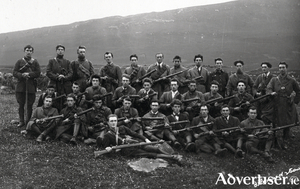
'The Men of the West', that iconic photograph of Michael Kilroy's flying column taken with only the aid of natural light on the southern slopes of Nephin at 11.45pm on the longest day of the year in 1921, is known to us all. It hangs in numerous Mayo pubs and homes and thanks to the quality of the conditions and the skill of the photographer, we can clearly see the resolute expressions of the young men, we know their names and know their stories. But what of the photographer himself? What of the man who captured this first ever photo of an IRA unit on active service in Ireland? Jack Leonard did not just happen upon Kilroy and his men that bright June night. He was no amateur photographer, and neither was he a bystander during his country's fight for freedom. With a keen sense of duty, Leonard used his talent to capture all aspects of Mayo life in the early twentieth century. Jack 'JJ' Leonard was born in 1882 in Crossmolina and as a young man he trained in journalism and photography in London. He returned to Ireland in 1906 to set up his photography business at a time when the country was in political flux. Emotions and anger remained after the Land War in Mayo, a period of civil unrest and violence in the late 1800s, and the methods of parliamentary nationalists were now being challenged by physical force republicans.
George Nicolls, c1887-1942
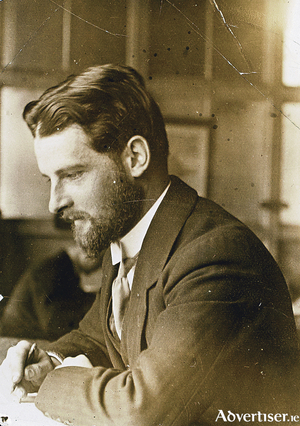
George Nicolls (Seoirse Mac Niocall) was born in Dublin but his professional career brought him to Galway town, where he worked as a solicitor and coroner for the West Riding District of the county. A committed nationalist, he became involved with Sinn Féin in 1907 and also served as president of the county board of the GAA. Nicolls was the IRB Centre for Galway town. On November 31 1913, he presided over a meeting in the Town Hall, for the purpose of formally establishing the Irish Volunteers in the county, and subsequently chaired the ‘monster public meeting’ in the Town Hall on December 10, at which 600 individuals signed up for the Volunteers. Nicolls also established a pipe band (Cumann Píobairí na Gaillimhe), where all but three were IRB members. It toured the county, playing at events such as GAA matches and concerts, which provided opportunities to recruit new members.
Galway in the weeks leading up to the Rising
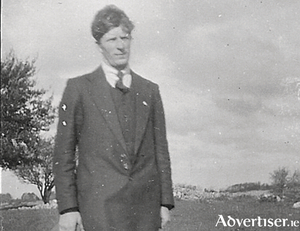
On Tuesday 25 April 1916, Galway became the only county outside of Leinster to take up arms against the British state during the Easter Rising. In fact, only three parts of provincial Ireland participated in the Rising: Enniscorthy in county Wexford; Ashbourne in north county Dublin; and county Galway, where several hundred rebels took over 600 square miles of the east of the county between Tuesday 25 April and Saturday 29 April. Commemorative documentaries and history books pay little attention to the Galway Rising with the focus tending to be on the more dramatic events that took place in Dublin, but Galway’s Rising was an important part of the story of the Easter Rising; and the story of the hundreds of brave Galway men who stood up to the British Empire in April 1916 deserves to be told in detail. In this series of five articles, FERGUS CAMPBELL will explain why Galway rose when so many other parts of provincial Ireland did not, and he will also tell the story of what happened in Galway during the Rising, and the impact that the Rising had on Galway society. This account is based on many documents, police reports, newspaper accounts and memoirs but most of the quotations are derived from the witness statements that Galway rebels made to the Bureau of Military History during the 1940s and 1950s, and these can be read online.
Mícheál Ó Droighneáin, 1916 veteran
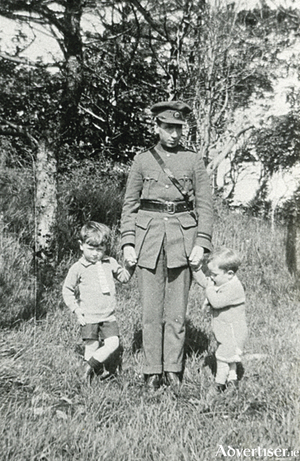
Mícheál Ó Droighneáin was born in Spiddal. He left school when he was 14 and got a job in McCambridge’s for 6d a week. Lady Killanin convinced him to go back to school and he became a monitor, went on to training college in Dublin, and it was there he became a Nationalist. “I became a member of the IRB towards the end of 1910 when I was teaching in Dublin [from August 1910 to January 1913]. Then I came to my native place, teaching in Spiddal for one year and then coming to Furbo.”
